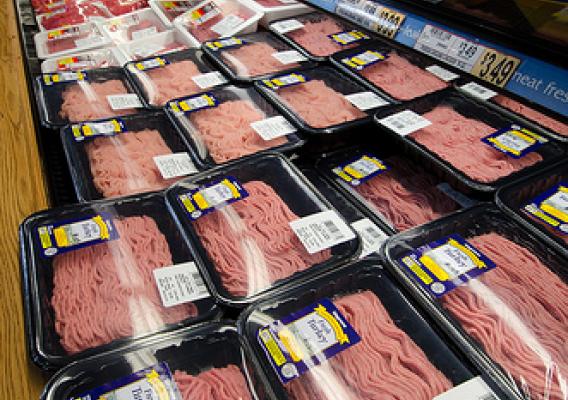
Title III, Trade of the 2014 Farm Bill discusses USDA’s food aid, export market development, and export credit guarantee programs. The bill reauthorized many standing programs, including the Market Access Program, Food for Peace, the Foreign Market Development program.
The Market Access Program (MAP) allows U.S. agricultural trade associations, cooperatives, state regional trade groups, and small businesses to share the costs of overseas marketing and promotional activities with the USDA’s Foreign Agricultural Service (FAS). These activities are intended to “build commercial export markets for U.S. agricultural products and commodities.”[1] The FAS also handles a variety of programs designed to aid farmers in developing regions establish local industry, providing education, samples, and monetary aid for certain practices and crops.
The Foreign Market Development Program (FMDP) is designed to “create, expand, and maintain long-term export markets for U.S. agricultural products.”[2] Projects funded under the FMDP typically address long-term opportunities to reduce foreign import constraints or expand export growth opportunities – for example, a project might modify codes or standards, or reduce infrastructural impediments.[2] These projects are carried out in partnership between the Foreign Agricultural Service and non-profit commodity or trade associations called “cooperators.”
The 2014 Farm Bill also reauthorized Food for Peace, the main vehicle for U.S. international food assistance. One of the original purposes of Food for Peace, which originated in 1954 under the name Public Law 83-480, was to “reduce large government stocks of program crops that had accumulated under U.S. Department of Agriculture commodity price support programs while responding to the humanitarian, economic development, and geopolitical goals in foreign countries.”[3] Today, the goal of Food for Peace has shifted to support long-term agricultural development – however, the United States continues to rely on domestic purchases of U.S. commodities as the basis for its food aid programs.[3] Under Food for Peace programs, cooperating sponsors “ship U.S. commodities to recipient countries either for direct use in food distribution programs or for monetization.”[3] While this is appears beneficial, the in-kind commodity donations that dominate Food for Peace operations are not wholly beneficial. Shipping large quantities of food abroad under the strict limitations and requirements the program sets out is costly and lengthy, and so not always a rapid enough response to the needs of the receiving countries. Likewise, the shipments tend to distort local markets and prevent local industry from developing. There has been recent pressure to increase cash donations over in-kind crop donations, because cash allows for a more rapid response in distributing food, is less distorting for local markets, and can better cater to the individual circumstances in receiving countries, instead of serving as a means to offload surplus commodities at great expense both domestically and abroad.
Source of Image: Types of Emergeny Food Assistance, USAID, http://www.usaid.gov/what-we-do/agriculture-and-food-security/food-assistance/programs/emergency-programs/types-emergency
The diagram above explains U.S. In-Kind Food Aid, one of the ways that USAID delivers food aid under programs such as Food for Peace. This type of delivery involves the shipping of U.S. commodities, including grain, across long distances – however, it is not the only type of food aid. See the full list of emergency food assistance types here.
Food for Peace lists international trade expansion and the promotion of sustainable agricultural development as two of its objectives.[3] It is interesting to examine the broader relationship between major international trade organizations and present day U.S. agriculture.
For example, consider the World Trade Organization (WTO), an international organization whose “primary purpose is to open trade for the benefit of all.”[4] Among other main activities, the WTO specifies its interest in:
- negotiating the reduction or elimination of obstacles to trade (import tariffs, other barriers to trade)
- agreeing on rules governing the conduct of international trade (e.g. antidumping, subsidies, product standards, etc.)
- administering and monitoring the application of the WTO’s agreed rules for trade [4]
As of July 2017, 164 countries were members of WTO, including the United States. Member countries must be careful to comply with WTO agreements designed to avoid market distortion – for example, WTO has established limits on measures to support prices, or subsidies directly related to production quantities.[5]
The 2014 Farm Bill shifted away from fixed direct payments to farmers, replacing those programs with new policies that make payments tied to market prices and yields.[6] These new policies fall under the more production-distorting amber box policies outlined by the WTO here.[5] Critics argue that these changes might “expose the United States to future trade disputes similar to the successful WTO dispute settlement case brought by the Brazil against U.S. cotton subsidies.”[6] Read more about the cotton dispute here.
As the sustainable food movement seeks to support a shift towards U.S. production and consumption of fruits and vegetables, away from commodities like corn and soy, there is likely to be pushback not only from industrial agriculture, but also from these types of trade agreements concerning market prices in the U.S. and internationally. It is important to consider how international influences can pose an obstacle to the policies that would make healthy, local food possible.
For a comprehensive summary of other programs managed through the Trade title of the 2014 Farm Bill, check here
[1] USDA. “USDA Helps Open and Expand Export Markets for U.S. Agriculture through 2014 Farm Bill Programs,” http://www.usda.gov/wps/portal/usda/usdahome?contentidonly=true&contentid=2014/04/0063.xml
[2] USDA, “Foreign Market Development Program (FMD)” http://www.fas.usda.gov/programs/foreign-market-development-program-fmd
[3] Schnepf, Randy. U.S. International Food Aid Programs: Background and Issues, Congressional Research Service. https://fas.org/sgp/crs/misc/R41072.pdf
[4]World Trade Organization. “Overview,” https://www.wto.org/english/thewto_e/whatis_e/wto_dg_stat_e.htm
[5] World Trade Organization. “Domestic Support in Agriculture: the Boxes,” https://www.wto.org/english/tratop_e/agric_e/agboxes_e.doc
[6]Glauber, J., and Patrick Westhoff. “50 Shades of Amber: The 2014 Farm Bill and the WTO.” Invited paper presented at the AAEA session (2014).
